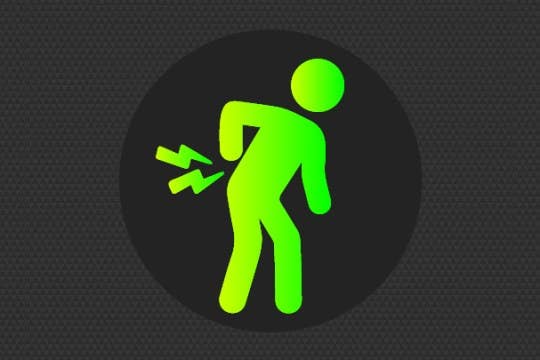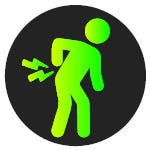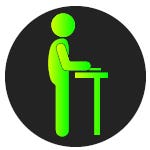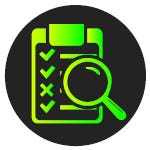
7 Tips for a Better Workplace Ergonomics Program
By John Heniff, Safety Writer, Magid
The Bureau of Labor Statistics reported that over 246,000 musculoskeletal disorder (MSD) injuries occurred on the job in 2020. MSDs can cause workers to experience persistent pain, limitations in mobility, and even require time off from work. But jobsite ergonomic improvements can relieve worker pain and help people work more comfortably during their shift. To address any concerns you or your team might have, you can create an all-encompassing workplace ergonomic program by utilizing these seven tips.




1. PROVIDE ERGONOMIC TIPS DURING SAFETY TRAININGS
Whether it’s a dedicated safety training presentation or taking a moment during a toolbox talk, giving your team helpful ergonomic information before they start their shift can keep safe work practices at the tops of their minds.
- For tasks that require heavy lifting, utilize mechanical devices like a handcart or a pallet jack to limit opportunities for overexertion.
- When working with ladders, never lean or overreach while on the rungs or steps. Reposition the ladder to a better position, instead.
- If your workers perform tasks that require repetitive motions, recommend different stretches they can do before their shift and during breaks to reduce fatigue and improve muscle coordination. You can even organize meetings before work that include an optional moment to stretch and warm-up, with rewards like coffee or breakfast for willing participants.


2. ENCOURAGE WORKERS TO TELL YOU ABOUT ANY PAIN OR MSD SYMPTOMS AS SOON AS POSSIBLE
Giving workers the agency and support to tell you about any MSD symptoms they’re noticing can prevent symptoms from worsening to the point of missing work or developing permanent injuries or conditions. This will also let you begin the process of making jobsite ergonomic changes sooner to prevent future symptoms from occurring or developing.


3. RESTRUCTURE WORKSTATIONS TO BE AS ERGONOMIC AS POSSIBLE
The old saying goes “an ounce of prevention is worth a pound of cure.” By incorporating worker input and conducting workplace hazard assessments, you can determine the best ways to improve jobsites and workstations so they can be ergonomically friendly for both fresh-faced newbies and long-tenured veterans. These can include installing a height-adjustable work bench or placing materials and tools in easy-to-access areas so your workers don’t have to overreach while in a set position.


4. UTILIZE THE HIERARCHY OF CONTROLS TO MANAGE EXPOSURE TO STRESSORS
If you’re looking to minimize worker stress or if rearranging workstations isn’t feasible, using administrative controls can provide relief and prevent overexertion. These can include:
- Alternating duties so workers aren’t performing repetitive tasks for long periods of time.
- Creating a rotational schedule where workers move to different functions throughout their shift so they don’t spend extended amounts of time on more physically tiring tasks.
- Instituting more rest and recovery breaks, especially if alternating tasks is not possible. You can recommend utilizing different break patterns such as a 20-second break after every 20 minutes of work or three to five minutes after every hour.


5. PERFORM CHECK-INS & EVALUATIONS OF WORKSTATION ADJUSTMENTS
Once ergonomic solutions have been implemented, regularly assess work areas to ensure hazards have been addressed and to determine if further ergonomic adjustments should be made. You can check in with workers during these moments to make sure they’re happy with the adjustments and are not experiencing the same or any new MSD symptoms, as well. Consider establishing a once-a-day or once-a-week post-shift toolbox talk to ask your team if they’re experiencing any soreness at the end of the day. Catching them when they’re most likely to have a complaint and outright asking the question makes it more likely you’ll hear about issues before they become problems.


6. INVITE AN ATHLETIC TRAINER TO PROVIDE EXPERTISE
Inviting an athletic trainer to walk your jobsite and speak with your team can give them first-hand ergonomic knowledge from an injury prevention expert. If your jobsite has an onsite athletic trainer, they can advise workers on proper body movements and provide tips for avoiding common injuries. If your company has an onsite nurse, they can work together to develop a companywide initiative for addressing common ergonomic injuries and disorders due to awkward postures, repetitive movements, and overexertion, too.


7. CONSTULT A SAFETY EXPERT TO CONDUCT A SAFETY ASSESSMENT
A proper workplace safety assessment will examine every operation in your facility and provide actionable advice on how to make work processes safer. But, an all-encompassing assessment can also address any ergonomic issues or concerns you or your workers may have. Find an assessor who will take pictures of work areas, talk to your crew about risk factors, and give you unbiased recommendations, not just try to sell you products.





